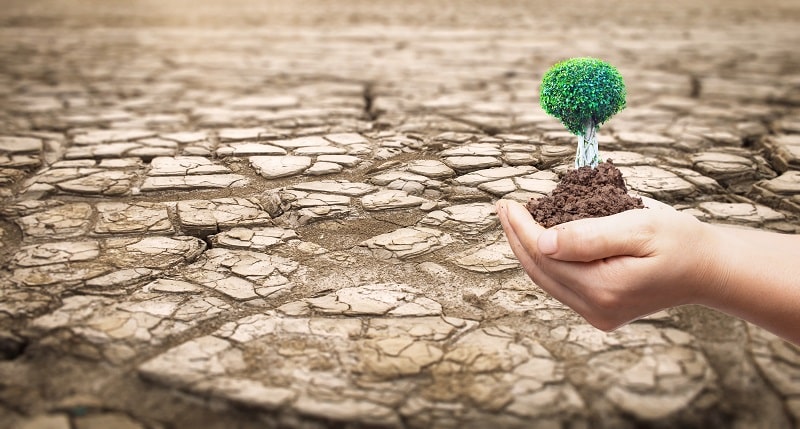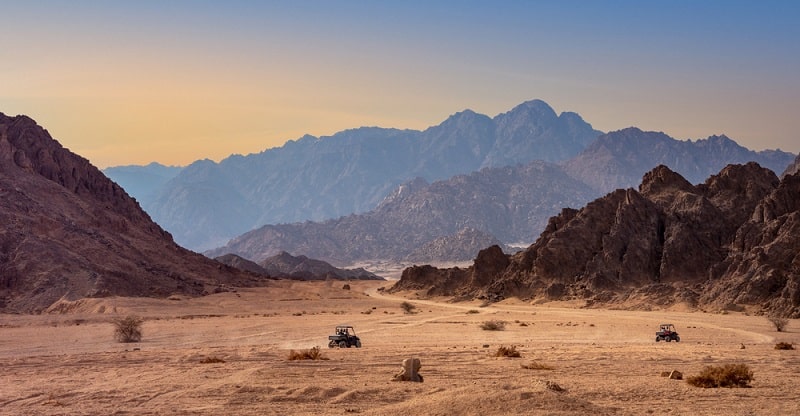Deserts around the world are growing at exponential speeds. Climate change is one of the biggest component elements in these growing deserts. However, mankind is possibly more to blame than anything. After all, are we not responsible for the rapid global warming that is occurring worldwide today?
Growing Deserts Around the World
Drilling for gas. Fracking for oil in the ocean. Mining for precious minerals. Poorly managed agricultural practices. These are just a few of the main reasons for the current climate change happening around the world.
In short, these practices are responsible for growing deserts on Earth. Urbanization, the overuse of shrinking groundwater, shocking rates of deforestation, and the sickening over-harvesting of natural resources are to blame as well. Natural disasters also cause trauma to land, weakening it and making it even more prone to desertification.
What is Desertification?
Desertification definition: also known as desensitization, this is in basics what happens when already dry land becomes even drier and arid. The once fertile land soon becomes desert as this change begins to quickly take hold. Climate change and humanity’s ecological footprint are two of the main culprits for the current desertification happening on planet Earth. Loss of rivers, lakes, groundwater, native plants, and animals, as well as the ability to carry out successful agricultural operations, are some of the main and immediate results of desertification.
Major Effects of Desertification

The effects of desertification are in all honesty far from being pretty. Currently, there are nearly 3.2 billion people on planet Earth who are feeling the impact of these growing deserts. A number which is rising. drastically from the 250 million reported just 12 years ago in 2006 by UNESCO.
Effects of Growing Deserts on the Land
The death of agriculture – one of the first results to take hold of the land is the inability to continue current agricultural practices. No water and poor soil make it nearly impossible to sustain normal farming operations. Without highly expensive advanced technology to aid in this area, there is little to do. This eventually leads directly to several other of the effects mentioned on this list.
Poor water quality – the quality of water is one of the most obvious areas impacted by an area that is suffering from desertification. With no plants left to help sustain water in the region, water levels plummet and even disappear altogether. This includes the loss of rivers, lakes, streams, and groundwater in general. This means little to no drinking water, let alone water for crops or other day-to-day uses like bathing and general cleaning.
Flooding – as ridiculous as it may sound, flooding is a very real possibility in a land with no plants and poor soil. In basics, there is nothing to sustain the water. Hence it flows freely over the land. This causes even further damage by carrying away the little soil, plants, and animals in the area. Flash floods are extremely common in deserts and are extremely dangerous to get caught in.
Effects of Growing Deserts on the People
Hunger – with the death of agriculture it practically goes without saying that food becomes sparse soon after. Not only does food become insufficient for people due to the lack of crops, it also becomes scant for animals. Furthermore, animals die off and migrate to new areas, leaving no game for hunters. All in all, it does not take long for hunger to set in.
Social and political meltdown – meltdown occurs due to the pressures from all of the above(widespread hunger, poverty, poor water quality). Social unrest rapidly transforms into a meltdown, affecting the social and political systems in the region in a negative manner. Eventually, migration of the masses occurs if no solution is found.
Overpopulation – as social and political meltdown impact the affected areas people migrate to more habitable lands. This means that they will end up in well-established cities. The cities must be large enough for them to find housing and some sort of income to support themselves. These cities soon become packed with too many people to handle and begin to suffer.
Poverty – The effects of desertification altogether easily lead to massive poverty. With no agriculture, poor water, little to no food, flooding, and social meltdown, there is little surprise that poverty follows. Even for those who relocate to a better geographical area, they have more than likely lost everything. It is safe to say that poverty is a very real effect of desertification.
Desert Fact
- Deserts exist on all four corners of the Earth – even Antarctica! In fact, nearly all of Antarctica is desert which has become frozen.
- 20% of the deserts are covered in sand.
- 50% of the deserts are exposed gravel and pebbles.
- 24 billion tons of soil is lost per year around the world.
- 3+ billion people are currently affected by desertification. Roughly 12 times more than just 10 years ago(according to a report released recently by the UN). Millions more are at risk of soon becoming affected.
- Most deserts on Earth are located somewhere between 30° North and 30° South of the equator.
- Most deserts see less than 10 inches of rain over the course of an entire year.
- 100°F is the average daytime temperature of deserts.
- 25°F is the average nighttime temperature of deserts.
- Europe is the only geographical area in the world which does not host a major desert.
What Can We Do To Stop Growing Deserts?
Is it true that Earth is on a fast-track to the same fate as Mars? A desert planet that is suspected by experts to have been teeming with life in the past? If so, what can we do, if anything, to slow down or reverse this travesty? Is it too late for future generations of humankind?
Education – possibly one of the most neglected areas, and one of the main reasons for the problem at hand. We must reverse the lack of understanding as to why desertification is occurring in the first place. Only then can we truly begin to battle the issues which are to blame. Setting up educational programs and making people aware of the situation is the first real step to developing solutions.
Rehabilitation – repairing what we have broken is a major step that we need to take. In order to slow and eventually even reverse the problematic growing deserts. This is a far more tangible option than people realize. Until recently, the Sahara desert was growing up to 30 miles per year. It is the largest desert on the planet, at over 300 million square miles.
However, due to the 8 billion dollar rehabilitation program The Great Green Wall, the expansion has been halted. 4,000 miles of gardens are being built along the borders of the desert. Preventing further desertification of at least 12 African nations. The project is also providing a much-needed source of food and income to those inhabiting the area. An area that has seen up to 12 million people leaving for greener pastures each year. Estimates show 60 million West and Central Africans will migrate to either Europe or North Africa by 2022!
The Need for Change is Real
In the end, it is up to us whether or not we reverse growing deserts. If we put enough effort into educating ourselves and rehabilitating the Earth, we have a chance. Restrictions and reform must happen if we want to avoid the same fate as our neighboring desert planet, Mars.
Restrictions – laws need to be passed and enforced in the agriculture, oil & gas, and mining industries. Restricting operations to certain areas and specific technologies and techniques will allow for positive change. The effects of desertification are not being fully combatted until we put restrictions in place. Those who are recklessly abusing the Earth and contributing to rapid climate are inevitably growing deserts as well.
Reform – we must press our governments to enact reform. The way our major industries operate and how our food is grown and harvested. We must also change how we develop our land, whether for commercial or residential use. If we do not demand reform, it will never happen. Before it is too late, and the Earth becomes a desert world such as Mars, we must call for major reform.
-
We live a very busy life, and discoveries and inventions play a pivotal role in…
-
Squares have four congruent sides and four right angles. They must be easy to draw,…
-
One of the most useful tools in chemistry is a periodic table, which organizes all…
-
The planet’s increase in temperature has risen to heights the world hasn’t seen in past…
-
Oscilloscopes are a must-have for any electronics workbench. But how do you calibrate an oscilloscope?…
-
Have you always wondered what planets exist beyond earth? Yes, you might have learned that…
-
Oscilloscopes are instruments used in the laboratory which is used to analyze waves of electronic…
-
Some will argue that an oscilloscope and a function generator are the best instruments used…










